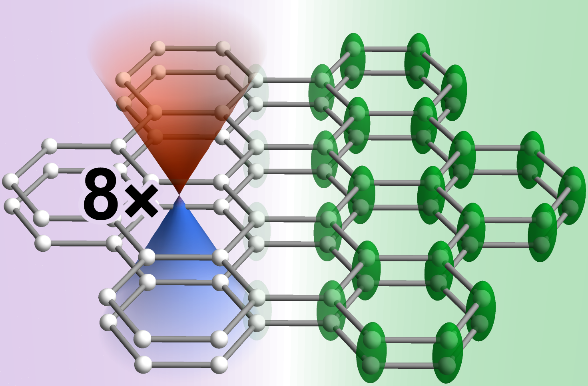As condensed matter physicists, we are fascinated by the strange collective behaviors that can emerge in quantum materials. Often times, new and exotic phases of matter arise from subtle interplay between the quantum mechanics of the electrons and the complex interactions within the material. One particular phenomenon that has intrigued us is called symmetric mass generation (SMG). This refers to a situation where massless Dirac fermions, which ordinarily behave like photons, acquire a mass gap without any symmetry breaking. Naively, one would expect that generating a mass gap requires breaking a symmetry, like the Higgs mechanism. However, SMG generates a gap while preserving all symmetries!

In our recent work (arXiv:2212.13364), we studied SMG transitions in a theoretical model consisting of a bilayer honeycomb lattice. This model is inspired by real materials like twisted bilayer graphene. Using advanced numerical techniques called variational Monte Carlo simulations, we demonstrated that the Dirac fermions in this model can undergo a direct transition from a massless semimetal state into a gapped, symmetric insulator state, as the strength of interlayer interaction is increased.
Our key finding is that the critical point between the semimetal and insulator appears to be described by an exotic theory called a fermionic deconfined quantum critical point (fDQCP). This theory predicts that right at the transition, the electrons fractionalize into two types of emergent quantum particles - bosonic spinons and fermionic chargons. Our numerical estimate of the fermion scaling dimension at the critical point matches the fDQCP prediction, providing evidence that the fermion indeed splits apart temporarily at this transition.
Importantly, this unconventional metal-insulator transition does not admit a simple mean-field description and goes beyond the textbook Landau paradigm of phase transitions. Unraveling the mechanism of SMG transitions enhances our knowledge of quantum criticality in strongly correlated systems.
Mass generation by fermion fractionalization may also shed light on other puzzles like high temperature superconductivity (arXiv:2308.11195). Furthermore, identifying candidate materials that exhibit SMG can guide the way towards realizing exotic particles like spinons and chargons in real quantum materials. We hope our work stimulates further studies, both theoretical and experimental, on this unusual route to creating excitation gaps in quantum matter.
(Written by Anthropic Claude2)
